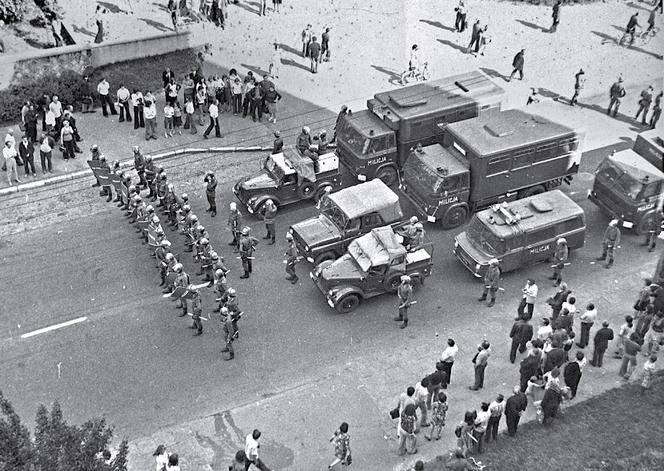Due to the announced drastic increase in the prices of food products, on June 25, 1976, nearly 100 thousand people went on strike in various parts of Poland. The largest-scale protests took place in Radom, Ursus and Płock. Despite brutal pacification by law enforcement forces, the authorities had to withdraw from the announced increases.
Late in the evening of June 24, 1976, the prime minister of the communist Polish government announced the introduction of drastic increases in the prices of food products (including sugar – 90%, rice – 150%, meat and fish – nearly 70%, dairy products 64%). The operation was to be mitigated by the wage compensation system, which in the public opinion was unfair to the lowest earners because they were to receive 240 PLN with earnings of 1,300 PLN, and those earning more than 6,000 PLN were to receive 600 PLN. Social discontent was also increased by the fact that the raise was announced as a proposal submitted for public consultation among trusted communist party officers, while in fact sheets with new product prices were already printed and delivered to specific parts of the country to be applied from Monday, June 28, 1976.
In reaction to the increases, on Friday, June 25, 1976, strikes broke out in over 100 workplaces in 24 out of 49 voivodeships in Poland. Nearly 100 thousand people took part in them. The biggest strikes took place on the streets of Radom, Płock and in the factory Ursus. In those places, there were also fights between the population and the law enforcement forces. The protest in Radom escalated and in addition to serious street riots, the local party office was set on fire. In total, over 20,000 people took part in the protest in the city. In order to suppress it, the authorities were forced to call law enforcement forces from other cities but finally they brutally pacified the protesting workers. The social revolt had a positive effect, however, as the communists withdrew from the announced price increases.
In connection with the protest, over 600 people were arrested in Radom and brutally beaten as part of the so-called “health paths”. Some of them were sentenced in show trials for up to 10 years’ imprisonment.





